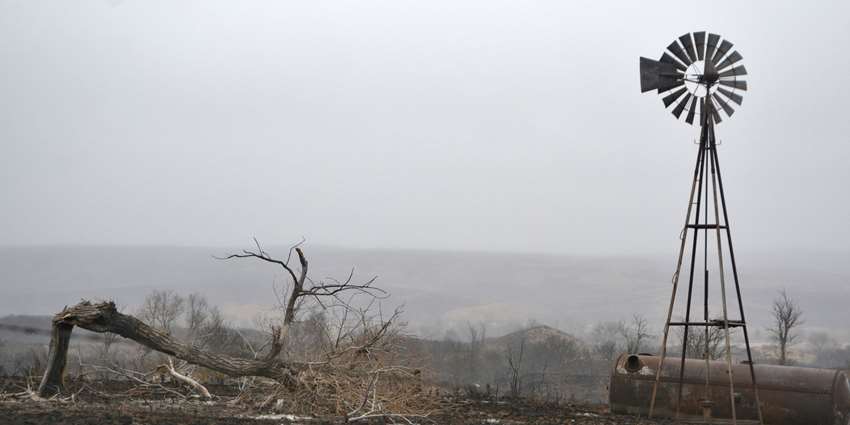Early estimates of agricultural losses due to the recent wildfires in the Texas Panhandle are $21 million, but that could change as producers make final reports of their actual damages in the coming weeks, according to a Texas A&M AgriLife Extension Service economist.
“The assessment of acreage burned is about all we have a good estimate on at this time,” said Dr. Steve Amosson, AgriLife Extension economist in Amarillo. “There are a lot of losses, and we just don’t know all of them at this time.”
As quoted on March 15, Amosson said the loss estimate of $21 million did not account for any loss of equipment. The basic categories considered are lost pasture, $6.1 million; fence repair or replacement, $6.1 million; buildings and corrals lost, $3.8 million; livestock death losses, $4 million; and emergency hay and feed, $1 million.
“Every individual rancher will weather these losses differently, depending on what their financial position was at the time of the fire,” Amosson said. “If they had large losses and already had a marginal financial position then it could put them out of business, but in most cases it will just create more financial stress for them, and they will keep ranching.”
For many ranchers, little insurance money will come into play, he said.
“Typically, not much is insured except for ranch houses, sometimes major buildings and once in a while the cattle,” Amosson said.
But there are some programs designed for this specific purpose that may help them offset losses such as the 2014 farm bill Livestock Indemnity Program, he said. Eventually, livestock losses are required to be registered with the U.S. Department of Agriculture Farm Service Agency in order to receive partial compensation.
With proper documentation, this program can compensate ranchers for 75 percent of the market value of cattle lost in the fire until the preset loss limit for a producer is reached, Amosson said. Additionally, a portion of fencing replacement costs may be covered through the USDA’s Natural Resource Conservation Service Environmental Quality Incentives Program.
While the current estimate is about 2,500 cattle lost because of the wildfire, Amosson said that number is expected to climb as more animals succumb to severe fire-related injuries. Other animals are being sold to packing plants, depending on how badly burned they were, he added.
“When we value the deaths of cattle at market value, including disposal costs, we’re talking about $3.6 million at this point, and I expect that to go up,” he said. “We’re still dealing with chaos. They’re still trying to find cattle.”
So far it will cost roughly $6.1 million to recover about 480,000 acres of pasture burned, which has to be set aside for the rest of 2017, Amosson said.
“Basically, ranchers will not be able to graze these pastures this year and will only be able to stock them at half capacity next year while they recover,” he said.
Continue reading the AgriLife Today article for more information.

